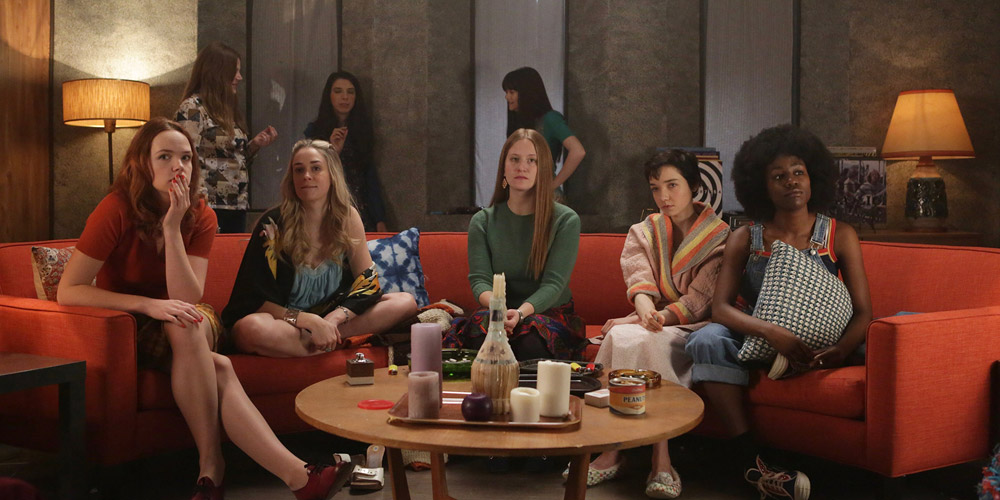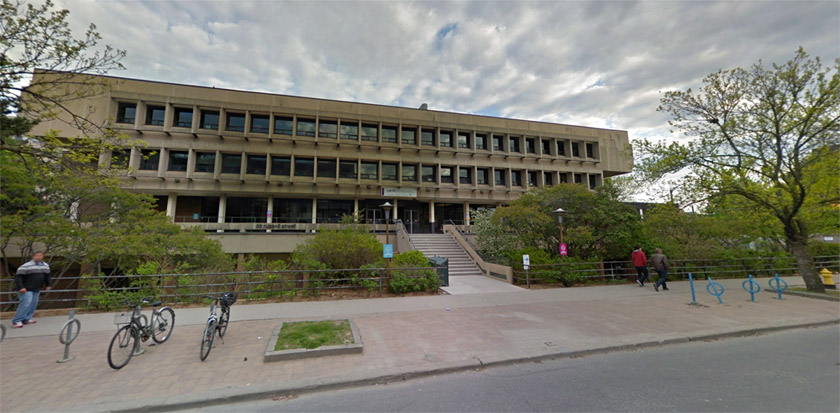
If the psychologists behind the Stanford prison experiment had pitched a reality show to Vice‘s short-lived television channel, it might’ve looked like this: 20 women confined together for three months, racing to weave as many belts as they can, while half are made to smoke joints of gradually increasing potency.
Sadly, however, this wasn’t the premise of a bleakly unsatisfying Viceland series but rather a bleakly unsatisfying science experiment that actually took place in Toronto in 1972, to determine how pot affects productivity. But it took more than four decades for the legend of it to surface, when the Toronto Star‘s Diana Zlomislic followed up on a tip from one of its participants, Doreen Brown. Zlomislic’s 2013 investigation — published in the paper as “Up in smoke” — has now inspired a feature film, The Marijuana Conspiracy, released to on-demand platforms on 4/20. (Variety calls it “mildly buzzy”; The New York Times calls it “shallow and tone-deaf.”)
The participants were never informed of the results of the Ontario-government-funded study, and the mystery of those findings — possibly buried for political reasons — was crucial to the 2013 Star feature.
But as Zlomislic tells CANADALAND, there is in fact a postscript.
“I found the results,” she says, “but they were never published in Canada, and they weren’t digitized at the time of the Star publishing the story.”
They wound up in the summer 1980 edition of The Journal of Human Resources published by University of Wisconsin Press, under the title “Marihuana and Work Performance: Results from an Experiment.” (If you have a library card, you can read it here.)
“It said that you can smoke pot, a lot of it, and still be productive,” says Zlomislic.
This week’s CANADALAND weaves together interviews with her and Doreen Brown and clips from the film.
Lightly edited for clarity, here’s what Brown told us about how her experience in the experiment went down:
Getting involved…
“In 1972, I was 21 and I heard about a marijuana experiment that was going to happen. And at that time, I wasn’t too happy, going through a lot of things in a job I really didn’t like. I wanted a change, wanted to maybe get introspective, get my head in a different place, and I thought, ‘Okay, I’m going to apply. I’ve got nothing to lose.’ And I went down to the Addiction Research Foundation and applied.”
Getting started…
“It was fun and games at the beginning, smoking marijuana legally. We could buy it whenever we wanted to as well. It was 50 cents a joint to buy it. And we’d weave belts for money: $2.50 a belt. They were measuring productivity and smoking weed. So that’s what I did.”
Getting high…
“We had to smoke every night in the lounge. I think it was 8:00, and they brought the weed to you on the little restaurant trays that they give your cheque on. And we had to smoke two joints by ourselves, we couldn’t pass it around. And they even checked the roach to make sure we smoked it right down.”
Getting isolated…
“We were there for 98 days. We couldn’t leave, we couldn’t have any phone calls. We had no contact with the outside world at all.”

Getting poked and prodded…
“Now, we did have a lot of physical and psychological tests. We had continual blood tests, urine tests — actually, the blood tests, we had so many that they gave us a letter for the track marks in our arms when we left, in case we were stopped by the police or something. We had to see the psychiatrist, and that was continual throughout the whole thing. But of course, we never got results, so who knows what happened, what those tests measured at all.”
Getting pushed…
“We were productive, on the whole, and I think that’s why they increased [the weed’s potency], so they could maybe prove that when smoking weed, you’re not productive, you’re lazy, whatever. I do believe that’s why they increased it.”
Getting low…
“In the beginning, it was like a party, meeting new people, we all got along, we were in this thing together. But as time went on, the isolation, too, was definitely a factor in this whole thing.…When the THC was increased, it became — at least for me, and I know for a lot of the other women — pure drudgery, because every night at a certain time, they brought the joints to you on this tray and you had to smoke both joints. The only way to get out of that was with a doctor’s note or maybe seeing the psychiatrist. But it became depressing after a while.”
Getting out…
“When I did leave, I found it really hard getting out of there, for many reasons. It was hard for me to go on a subway. Just to be in a room full of people. And I am an extrovert. But it was really, really hard.…You’re isolated for 98 days. You’re with the same people. So in a sense, it was a very safe environment, I guess. And to get out… maybe it’s like being incarcerated or something. You’re back out in society — ‘Wow, there’s life going on out here.’ And I found that really hard.”
Getting ripped off…
“You do feel a bit ripped off. You feel taken advantage of, even though you went into it voluntarily. But still, they did say we would get the results. We never did. So a feeling of ‘Great, we were used for 98 days, kind of a harsh situation, and never got results.’ We never even had a follow-up when we got out. What experiment would do that? I don’t think there’d be many. When we left, it was ‘Goodbye, see ya,’ and never followed up, physically, mentally, nothing. It was like it never happened.”
Getting in the history books…
“I guess about six, seven years ago, I just sat down one night, and I thought, ‘Okay,’ I started thinking about it, and wrote two or three pages, sent it to some media people in Toronto. And then Diana from the Star called me the very next morning and came to Cambridge[, Ontario,] to see me, and she did the article. And then Craig Pryce, who did the film, saw the article and I guess put it away until he was ready to do an independent film. And hence, the film. So it’s funny how things come around full circle here.”
Promotional still from The Marijuana Conspiracy courtesy Samuel Goldwyn Films.
